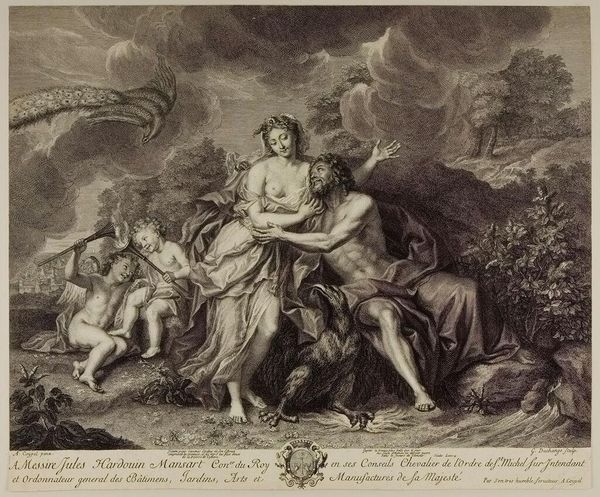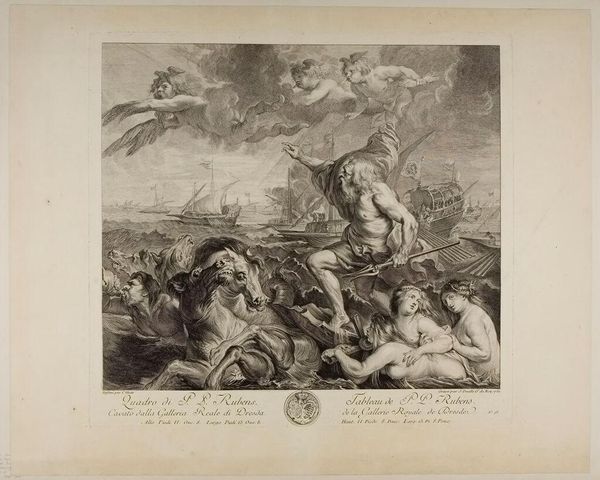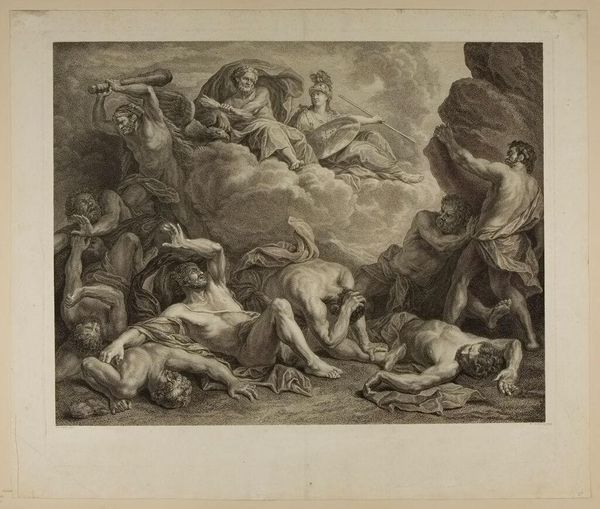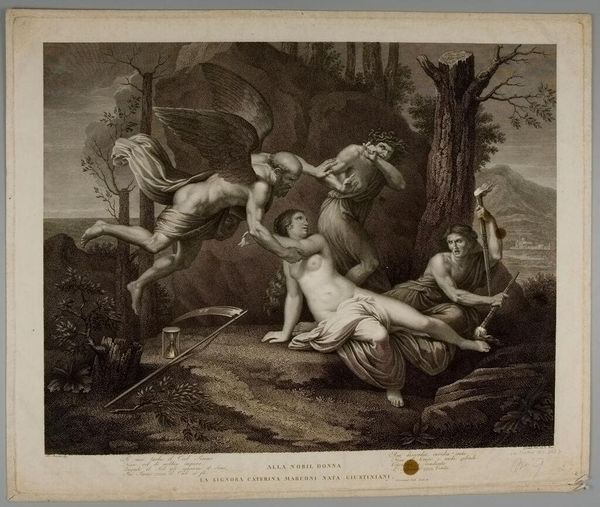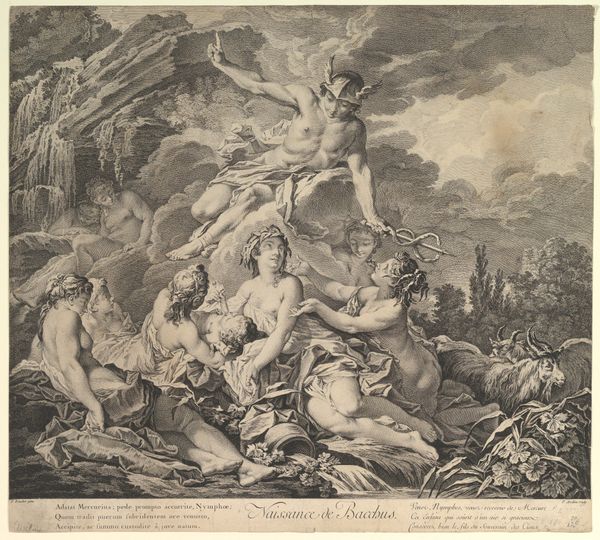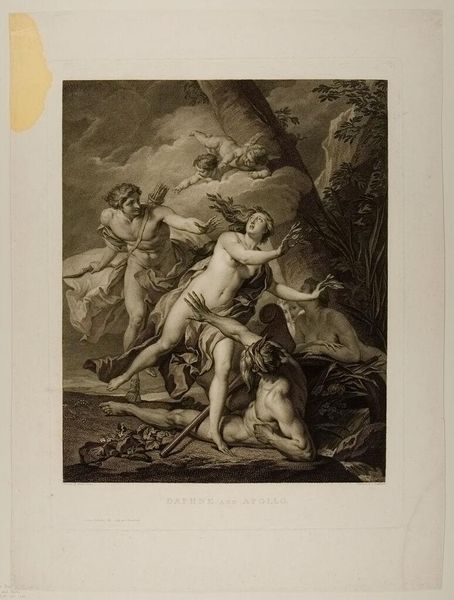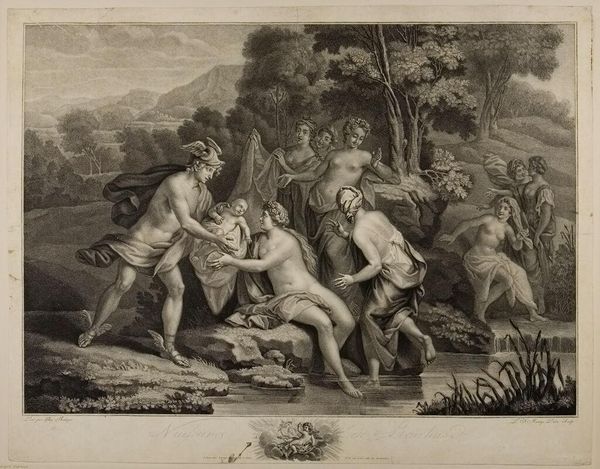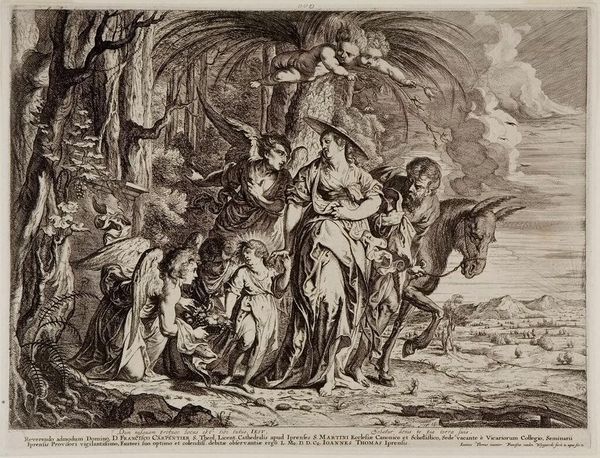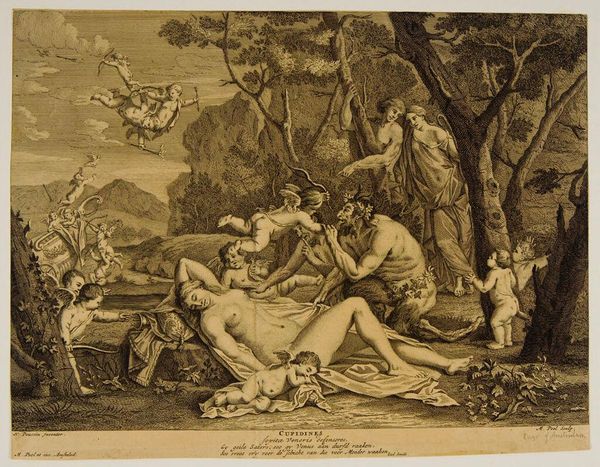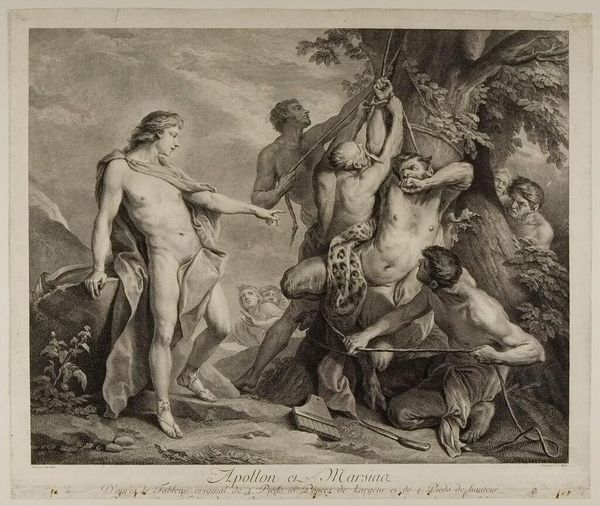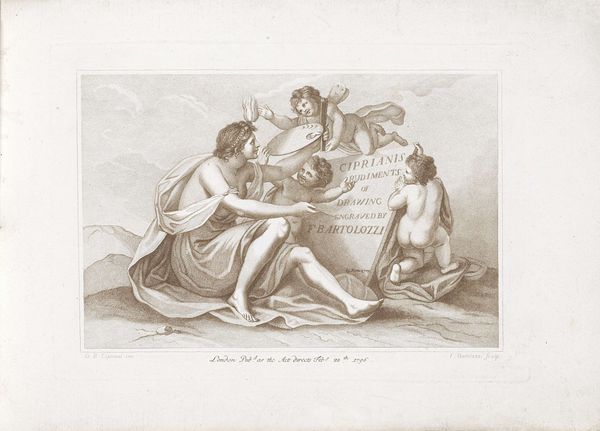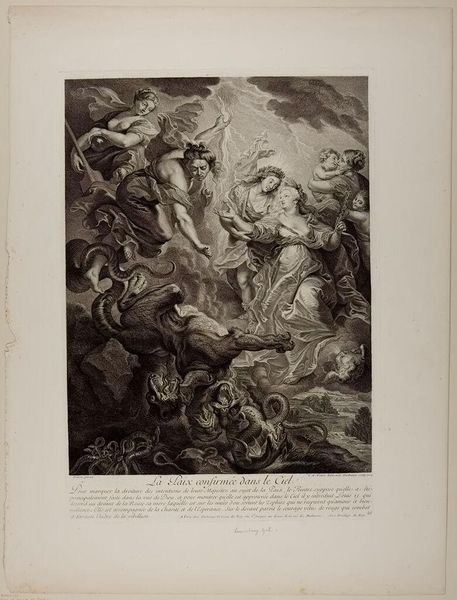
Copyright: CC0 1.0
Editor: This is "Christ on the Mount of Olives" by Robert van Auden-Aerd. It depicts a solemn scene, and the fine lines create a soft, almost dreamlike quality. How do you interpret this work in its historical context? Curator: Consider the role of religious imagery in public life. Prints like this circulated widely, shaping popular understanding of biblical narratives. How might the artist's choices—the angels, the chalice, the inscription—influence the viewer's emotional and spiritual response? Editor: It seems designed to evoke empathy for Christ's suffering, but also reverence. The inscription adds another layer. Curator: Precisely. The public display of such images reinforced religious values and moral codes. It prompts us to consider the intersection of art, faith, and social control. What have you learned? Editor: I see how the image functioned within a broader system of belief and visual culture. Curator: Indeed, art is never created in a vacuum.
Comments
No comments
Be the first to comment and join the conversation on the ultimate creative platform.
